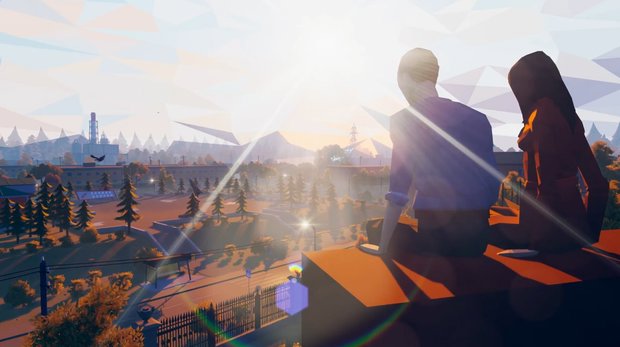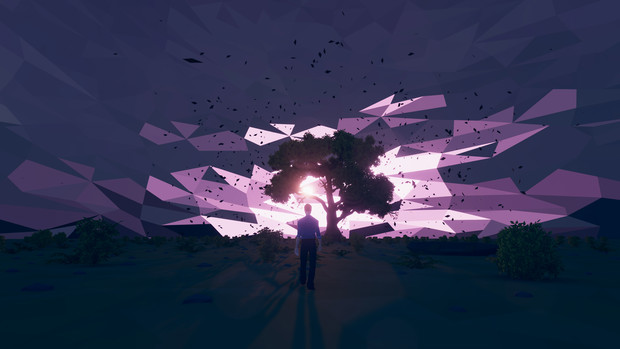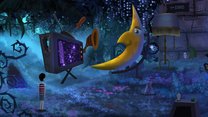Know by heart... review – Beautiful but unforgettably bleak narrative adventure sacrifices gameplay for character drama

- 0 Comments
Portuguese author José Saramago wrote a book titled Blindness in 1995, about a special epidemic inflicting almost everyone in an unnamed city with, yes, blindness. I couldn’t help but think of this novel while playing Know by heart..., a narrative adventure by Ice-Pick Lodge, better known for its surreal Pathologic roleplaying survival series. Instead of blindness, the game city’s inhabitants are suddenly inflicted with amnesia, starting small but suddenly growing out of proportion. It really makes you feel the anguish of the characters when memory loss strikes the people they love, but the gameplay seems to take a step aside to give all focus to the story and its emotional impact on the player. You’re basically just watching it all unfold without really doing anything about it, as if you were reading a book or watching a movie.
You play as Misha, who works at a train station in a small, unnamed Russian town around the turn of the twenty-first century, where his job is to copy travelers' names on a typewriter until his childhood crush Asya arrives. After work you’ll have the chance to start exploring the town, with Asya as well as alone, to reminisce about the past. You can find memories that appear in the form of piles of fallen leaves on the ground here and there, which swirl up in a mini tornado as you approach them, before disappearing to reveal memory bubbles you have to pop. Each bubble gives a new line of dialogue through which the recovered memory is told. During the first hour of the game, it isn’t clear what your main objectives are, so all you can do is follow along looking for any scattered interactive elements.
Featuring a peculiar low-poly graphic style with faceless characters, Know by heart is a third-person graphic adventure with a fairly traditional point-and-click interface. You might expect a game like this to use the keyboard or a gamepad to move the main character around, but no, you simply click where you want Misha to go. When indoors the characters walk, but outside they automatically start to run. Everything else is mouse-controlled as well. Hotspots light up when you hover the cursor over them, but when it comes to the NPCs, that doesn't necessarily mean you'll actually be able to talk to them. Clicking these characters sometimes generates no response whatsoever, which can be a bit confusing because I often thought I misclicked or did something wrong.

The game begins with a weird, foreboding dream sequence immediately showing off the artists’ talents. But the waking world is an equally beautiful world to explore, which is good because you’ll spend a lot of time running through the many detailed streets of this town, which has an almost perfect balance between civilization and nature. It’s not a big city with highrises or heavy traffic, but rather a small provincial town where people who don’t need much would love to live. During your explorations you visit the train station, of course, the neighbours in your apartment complex, the hospital, the police station, and the orphanage, but the most notable location is the park where Misha and Asya share several memories. There’s a particularly beautiful shot of fallen leaves swirling in the sun that really stands out.
Occasionally there are special visual effects symbolizing the main character’s own fading memory later in the game, when you find yourself deeper inside his head. Some scenes are altered to simulate a dreamlike or hallucinatory experience as if the world was covered in fog, revealing certain pathways, and in another sequence the world seems to become flooded with water. The fog scenes made me think of the Silent Hill games, while the water sequence kind of scared me. I’m not too fond of water myself, and it was approaching so fast I really thought Misha would drown.
While the on-screen characters are faceless, more detailed dialogue portraits pop up at the bottom of the screen during conversations to identify them more clearly. The main character is voiced but only when sharing his thoughts; during dialogues only the other people speak aloud, so be sure to fully read the available options in Misha’s replies before you select them so you don’t miss anything. Strangely enough, Misha is the only one who speaks with a heavy accent. This is perhaps better suitable for the setting, but he does sound a bit out of place in comparison to the other characters who have more natural English voices. Asya really sounds like the girl next door, and though he doesn’t look like him, the voice of Misha’s best friend Artyom reminded me of Ryan Reynolds. Since the dialogue is what primarily drives this game’s story, it was crucial to have believable actors delivering their lines, and the voice cast here prove themselves up to the task. Complementing the beautiful, nontraditional art style is lovely piano music reminding me of movie soundtracks by James Newton Howard, especially the M. Night Shyamalan ones. A certain piece in particular is very similar to the one in Signs, accompanied by impressive shifts in camera angles and lighting.

After finishing the first day, which happens automatically after completing the necessary tasks, I was rather curious to find out what the next day would have in store. I expected more intrigue now that the introductory chapter was over, but there’s not all that much excitement on day two either. You’ll spend it travelling all over town with Misha’s friends looking for old photos to put into an album as a birthday gift to his aunt. This means digging up loads of shared memories and engaging in a couple of mini-games like chasing little kids around a playground and pouring the right kind of tea for people. You’ll get to borrow your uncle's car for a while (though you can’t drive it yourself) until it breaks down and you have to push it back to the garage, with actual stamina bars suddenly appearing over the characters’ heads. (Don’t worry about them; they fill up very fast again once you stop pushing.)
As you pursue these laid-back objectives, Know by heart has quite a relaxing atmosphere, though it eventually does try to add mystery when the townspeople start losing their memories. Then an unidentified helicopter arrives, moving the game further into thriller territory, but it never really gets there, since there’s no shift in gameplay style to add more action or suspense. The game’s objectives remain personal and small-scale rather than trying to save the town from its affliction. There’s always something to do, but your goals continue to be a bit mundane. The gameplay doesn’t go much further than visiting people, talking to them, and now and then performing a simple task to remind you that you’re still playing a game instead of watching a fictional story unfold.
While exploring the town, you can access a map to help you navigate, but you have to assemble the map from separate pieces that pop up as the story progresses like a jigsaw puzzle. A red circle on the map will always indicate where you need to go next, and the map is indeed handy to find the quickest way there. Other than adding an easy gameplay element, these map pieces don’t seem to have a function, however. You can visit locations you don’t yet have on your map, and even play the entire game without looking at the map once, though you’ll miss out on the achievement for completing the puzzle.
Putting the map back together is similar to the way you need to piece torn-up photographs of forgotten memories back together. These pop up later in the game when you start talking to people who have fallen victim to the epidemic amnesia. They appear full-screen and you have to assemble them several times in a row to uncover new lines of dialogue, similar to bursting the memory bubbles earlier in the game.
While you play as Misha during the first part of the game, later you’ll take control of his friends Almaz and Genghis in the same fashion, walking around, bursting memory bubbles and piecing photographs back together until finally returning to Misha. This change of characters felt a bit weird at first, but it does add some layers to the story as you get to experience how they cope when their loved ones fail to recognize them. There is another mini-game when controlling Ghenghis, similar to gathering the kids in the playground but more intense this time.
The result of this sequence, along with some choices I made near the end, made me wonder if it would be possible to change certain outcomes in a second playthrough by making different decisions and choosing alternate replies to NPCs, perhaps even leading to whole new endings. And indeed that’s what the developers promise. But the game feels very linear and doesn’t really invite a second playthrough right away; perhaps after some time has passed and my own memories of the story have faded, I’ll feel motivated to play again, but not right away. It didn’t help that the bleak ending I got made me sad. There was a moment when I quietly cheered and hoped for at least some kind of good ending off-screen, but of course that’s just optimistic conjecture.
Final Verdict
Know by heart... took me seven hours to finish, and as a lover of stories I was largely impressed by its writing. The script, nicely performed by the voice cast, deals with normal people like you and me whose lives are disrupted by abnormal circumstances. But where thrillers and paranormal mysteries would concentrate on getting to the bottom of those strange happenings, here the focus remains on the people themselves and the effects these troubling occurrences have on their lives and relationships. It’s a more intimate human story, brought to life by beautiful low-poly artwork and music worthy of cinematic experiences. There are no puzzles and only the occasional interactive element to keep gamers interested, but if you enjoy thoughtful character dramas, you’re sure to find this one tugging at your own heartstrings as well.
Hot take
With its limited interaction, Know by heart… may have worked better as a book or film, but it’s a beautiful game with a touching personal story that never loses its focus on the people of a quiet town in crisis.
Pros
- Beautiful low-poly artwork
- Intriguing character-centered storyline and dialogue worthy of a literary novel
- Impressive film-like cinematic music
Cons
- No real puzzles, and mini-games are more show than substance
- Main character doesn’t speak his dialogue lines out loud
- NPCs aren’t always interactive even though the game shows they are
Johnny played his own copy of Know by heart... on PC

- Advertisement
- Help support AGH by advertising with us











0 Comments
Want to join the discussion? Leave a comment as guest, sign in or register.
Leave a comment